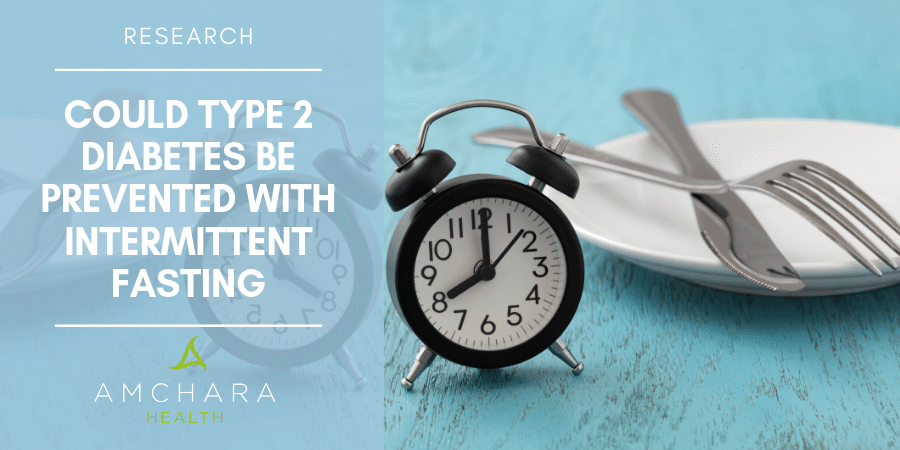Topics Covered in this article:
New research suggests that intermittent fasting may reduce pancreatic fat, which is thought to contribute to the development of Type 2 diabetes.
Scientists have already found that intermittent fasting improves sensitivity to insulin, which is needed to regulate blood glucose levels.
But now researchers from The German Institute of Human Nutrition have demonstrated that an intermittent fasting regime also appears to lower pancreatic fat.
The study, published in the journal Metabolism, discusses the mechanisms by which pancreatic fat might contribute to the development of Type 2 diabetes. (1)
Study Findings
Although fatty liver is a common and widely researched disease, little is known about how the effects of fat, accumulated in the pancreas due to excess weight, contributes to the development of Type 2 diabetes.
In this latest study, the research team discovered that overweight mice with a susceptibility for diabetes have a denser accumulation of fat cells in the pancreas.
Conversely, looking at diabetes resistant mice, it was found that, despite being overweight, their particular genetic makeup meant they had hardly any fatty deposits in the pancreas, but instead had fatty deposits in the liver.
According to the research team, fat accumulated in the liver is known to have a negative effect on the organ as well as the rest of the body, but how fatty deposits impact on pancreatic function has not been clear until now.
For the purposes of the study, the overweight mice prone to diabetes were placed into two separate groups.
One group could eat as much as they liked, whilst the other group were put on an intermittent fasting regime.
At the end of a five week period the scientists saw that the first group given unlimited food had accumulated fat within the pancreas, whilst the other group had hardly any fatty deposits at all.
Fat Affects Pancreatic Function
After further investigations they discovered that the presence of mature fat cells in the islets of Langerhans (pancreatic islets) altered the function of the beta cells of the islets, causing an increase in the output of insulin.
They suspected that as insulin secretion increased, the islets of Langerhans of diabetes-prone mice depleted faster and then, over time, ceased functioning altogether.
This may explain why fat accumulation in the pancreas could contribute to the development of Type 2 diabetes.
Islets of Langerhans
The islets of Langerhans are islands of hormone-producing cells scattered throughout the pancreas.
A healthy adult is estimated to have between 3.2 and 14.8 million islets of Langerhans.
Beta cells found in the islets produce the blood glucose-lowering hormone insulin, which helps to regulate glucose homeostasis.
When blood glucose levels are elevated, these secrete insulin into the bloodstream so that the levels are normalised again.
Type 2 Diabetes Prevention
Type 2 diabetes is a condition characterised by increased insulin resistance and decreased beta cell function.
For most people it is a condition that develops due to being significantly overweight, although there is a strong genetic component.
Currently the most reliable approach to preventing Type 2 diabetes is to maintain a healthy weight and thus prevent the accumulation of fat in the liver.
In light of this research, depending on certain genetic conditions, the pancreas is seen to participate in the development of Type 2 diabetes, so intermittent fasting could be a useful therapeutic tool in the future.
The advantages of intermittent fasting are that it does not require drugs, is non-invasive and is easy to integrate into everyday life.
Intermittent Fasting
Intermittent fasting involves not eating during certain periods of time.
However, water, unsweetened tea and black coffee are allowed at any time.
There are different versions of intermittent fasting and the fasting period can last anywhere between 16 and 24 hours.
Other methods restrict calorie consumption to between 500 and 600 on two days of the week.
One of the most popular forms of intermittent fasting is the 16:8 method which involves eating only during an eight-hour period and fasting for the remaining 16 hours.
Often to make it easier one meal is excluded – usually breakfast.
We always take an evidence-based approach and aim to provide you with actionable knowledge and tips to help you on your journey to optimal health.
Have you tried intermittent fasting?
We believe sharing knowledge and experience helps empower people to make better health decisions.
We’d love to hear from you, let us know what you think.
READ THIS NEXT:
- Amchara’s Approach to Diabetes
- What are common signs of Type 2 Diabetes?
- Can You Really Reverse Type 2 Diabetes With A Raw Food Diet?
- Reverse Insulin Resistance with Intermittent Fasting
- Intermittent Fasting – A Natural Way To Live For Longer
- Type 2 diabetes: is weight loss a simple solution for this global epidemic?




